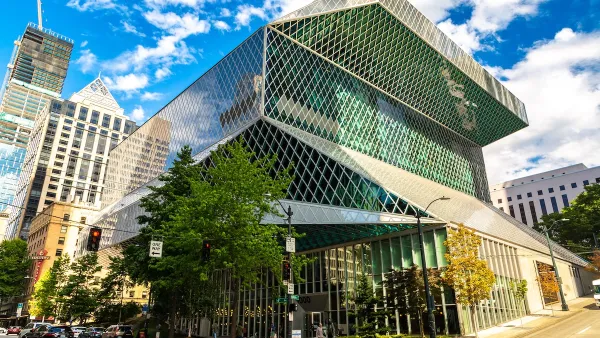On the one-year anniversary of the beginning of Occupy Wall Street, Richard Sennett looks at the movement's legacy with regards to rethinking public space.
Although America's Constitution begins with the protection of the freedom of assembly and speech, cities have been able to erode those protections over time by requiring permission for groups to gather in public, and by the blurring of the lines between public and private space. However, with tents and sleeping bags, the Occupy movements were able to test each city's limits on freedom of assembly, writes Sennett.
And, in addition to shining a spotlight on issues such as the "ambiguity in the distinction between 'public' and 'private' in urban areas," and the ambiguity between "secular and sacred space in the city," one of the movement's most profound successes has been to challenge the ways in which urbanists, like Sennett, think about the city.
Says Sennett, "Jane Jacobs once famously declared that 'if density and diversity give
life' to public space, 'the life they breed is disorderly.' In my
planning work, I've translated this idea into practice by seeking to
make self-contained public spaces more porous-for instance, by extending
open-air markets into side streets in Beirut or punching more doors
into single-entrance buildings in London."
FULL STORY: New Ways of Thinking About Space

National Parks Layoffs Will Cause Communities to Lose Billions
Thousands of essential park workers were laid off this week, just before the busy spring break season.

Retro-silient?: America’s First “Eco-burb,” The Woodlands Turns 50
A master-planned community north of Houston offers lessons on green infrastructure and resilient design, but falls short of its founder’s lofty affordability and walkability goals.

Delivering for America Plan Will Downgrade Mail Service in at Least 49.5 Percent of Zip Codes
Republican and Democrat lawmakers criticize the plan for its disproportionate negative impact on rural communities.

Test News Post 1
This is a summary

Test News Headline 46
Test for the image on the front page.

Balancing Bombs and Butterflies: How the National Guard Protects a Rare Species
The National Guard at Fort Indiantown Gap uses GIS technology and land management strategies to balance military training with conservation efforts, ensuring the survival of the rare eastern regal fritillary butterfly.
Urban Design for Planners 1: Software Tools
This six-course series explores essential urban design concepts using open source software and equips planners with the tools they need to participate fully in the urban design process.
Planning for Universal Design
Learn the tools for implementing Universal Design in planning regulations.
EMC Planning Group, Inc.
Planetizen
Planetizen
Mpact (formerly Rail~Volution)
Great Falls Development Authority, Inc.
HUDs Office of Policy Development and Research
NYU Wagner Graduate School of Public Service




























